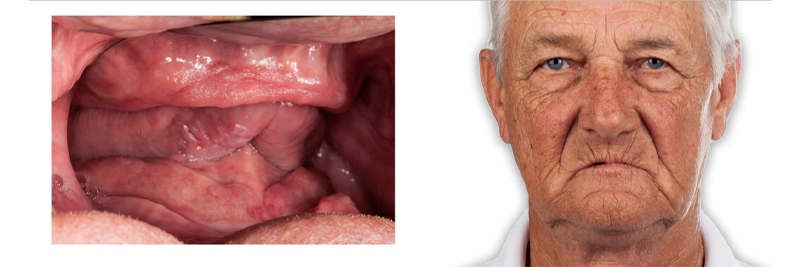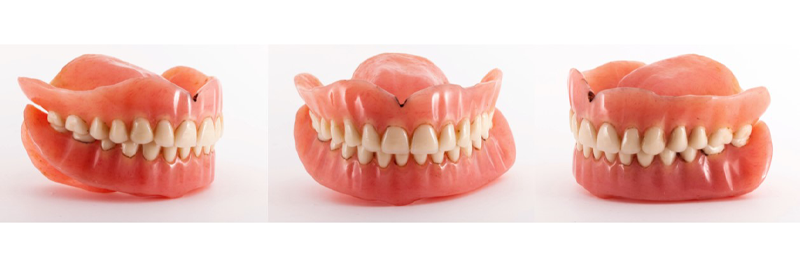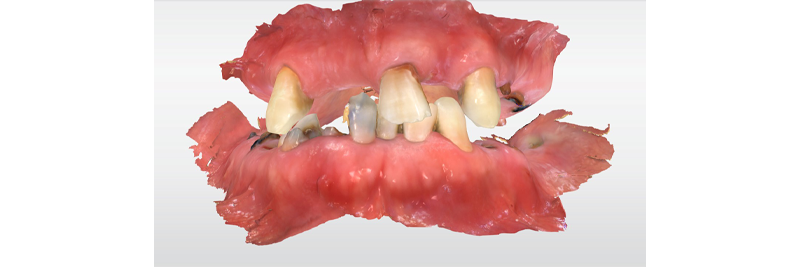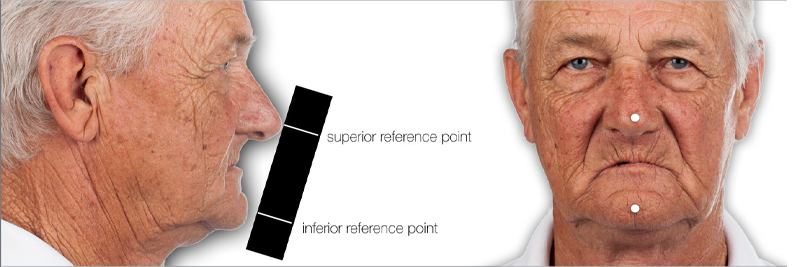Options for Determining Vertical Dimension With Edentulous Patients
When an edentulous patient presents for restorative treatment, clinicians are faced with several challenges, regardless of whether the treatment will be conventional or implant-retained. One of the most common clinical challenges is determining the optimal occlusal vertical dimension. This is especially true if the patient presents without existing prostheses.

If the patient presents with a set of existing conventional complete dentures, a common approach is to transfer that vertical dimension to the newly fabricated prostheses. While using information like OVD from the existing dentures can certainly be useful, this approach is potentially risky for clinicians because it often assumes the existing OVD is correct for the patient, which may not be true.

In either scenario, the clinician must be confident in their ability to determine the patient’s individualized occlusal vertical dimension. Both the literature and individual clinical experiences are replete with options for doing this. These options could be described as preextraction or postextraction methods for determining the occlusal vertical dimension.
Preextraction vs. postextraction methods
According to the Glossary of Prosthodontic Terms, occlusal vertical dimension is defined as the distance between two selected anatomic or marked points when in maximal intercuspal position. Clinically, the two points used most commonly are the tip of the nose and the tip of the chin; however, these points are only useful as a way of referencing the vertical dimension. Because these two points are arbitrary, the absolute distance between them is not a valuable indicator of the OVD.
Records of the patient’s clinical situation before having their teeth extracted can be incredibly useful for a variety of reasons, but especially for determining the OVD. Preextraction methods include:
- Measurements of intraoral dimensions or distances
- Tracing the preextraction soft tissue profile
- Preextraction cephalometrics
- Preextraction photographs
The real benefit to preextraction records comes from a clear appreciation of the patient’s initial condition. As it relates to OVD, relying solely on preextraction records has two major problems:
- Availability of the records. Often, preextraction records aren’t available and as a result, a postextraction method of determining the OVD must be used.
- Acceptability of the preextraction OVD. Techniques for using preextraction records assume that the preextraction vertical dimension was correct and the goal would be to maintain it. However, this may not be true. As a result, again, a postextraction method would be required.

With these potential problems in mind, clinicians may choose to use preextraction records if available, but must know how to determine the OVD for edentulous patients following a postextraction approach.
Postextraction methods for OVD determination in edentulous patients include:
- Freeway space
- Following existing dentures
- Facial esthetics
- Phonetics
- Swallowing
- Craniofacial landmarks
- Cephalometric evaluation
- Additional methods
The most widely used postextraction method is the freeway space approach.
Freeway space approach
To understand the freeway space approach, we need to define our terms.
- Physiologic rest position, or the rest vertical dimension, is the postural position of the mandible when an individual is resting comfortably in an upright position and the associated muscles are in a state of minimal contractual activity.
- Freeway space, or the interocclusal rest distance, is the difference between the rest vertical dimension and the occlusal vertical dimension.
With the freeway space method for determining OVD, the physiologic rest position is identified clinically and subsequently average values for freeway space (2–4 mm) are subtracted from the physiologic rest position. The resulting mandibular position is the proposed occlusal vertical dimension.

While this approach is common in clinical practice, it’s not without challenges. The first is clinically determining the physiologic rest position. Common options to identify the physiologic rest position include:
- Ask the patient to relax with their lips together without any further instructions. The distance between the two facial reference points may then be evaluated.
- Instruct the patient to lick their lips, swallow and relax. As the patient begins to relax, the reference points are evaluated.
- Ask the patient to make the “em” sound, keeping the lips together as they finish making the sound.
In practice, more than one of these options will be required often to determine physiologic rest.
The second challenge with the freeway space method for determining the OVD in edentulous patients has to do with the repeatability of the physiologic rest position. The literature is conflicted as to whether the physiologic rest position is stable over time, with some authors suggesting the position is as stable as the fully seated condylar position and others finding wide variability and instability. As a result, it may be better to think of the physiologic rest position as a range, rather than a reliably repeatable mandibular position.
The clinical success this technique has demonstrated over time proves that it is, at the very least, a good beginning position from which to evaluate the patient’s OVD. However, the lack of repeatability for at least some patients means clinicians should not rely solely on this technique for OVD determination.
As a result, clinicians need to know at least one other post-extraction approach for determining OVD that could be compared against the OVD determined using the freeway space approach.
References
- Alhajj MN, Khalifa N, Abduo J, Amran AG, Ismail IA. Determination of occlusal vertical dimension for complete dentures patients: an updated review. Journal of Oral Rehabilitation 2017 44 (11):896–907.
- The Glossary of Prosthodontic Terms, Edition 9. J Prosthet Dent. 2017;117:e1-e105.
- Turrell AJ. Clinical assessment of vertical dimension. J Prosthet Dent. 1972;28:238–246.
VIRTUAL SEMINARS
The Campus CE Experience
– Online, Anywhere
Spear Virtual Seminars give you versatility to refine your clinical skills following the same lessons that you would at the Spear Campus in Scottsdale — but from anywhere, as a safe online alternative to large-attendance campus events. Ask an advisor how your practice can take advantage of this new CE option.

By: Darin Dichter
Date: May 15, 2019
Featured Digest articles
Insights and advice from Spear Faculty and industry experts


